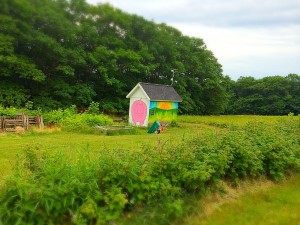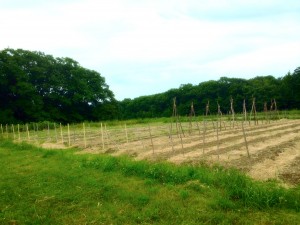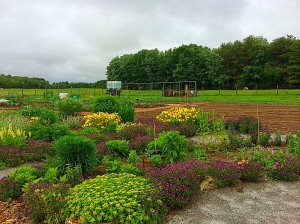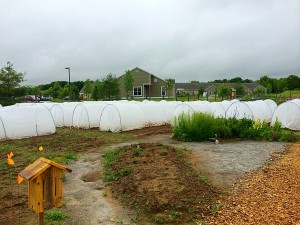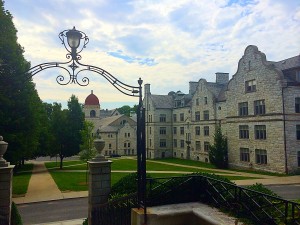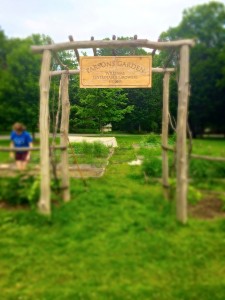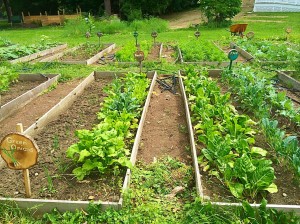
Audience Navigation
Utility Navigation
Student Blogs
Holy Cross Goes to…Colby, Bowdoin, and Williams
In the original proposal, Matt and I explained that it is crucial for us to closely analyze other colleges in the region that has an established garden/farm. The importance of doing so is to attest to the feasibility of a successful college garden. The material gathered will provide us with invaluable insight and enable us to compose a more comprehensive report. In order to attain the information, we will be conducting detailed interviews with students and faculty members who are involved with their campus’ garden. Additionally, we have selected a number of colleges to visit. By visiting, we would have a chance to have a more personal face-to-face interview, along with the opportunity to have an upfront look at their garden and how it is operated.
Our first visit was to Yale Farm (check my blog post a few weeks ago), which had prepared us well. For the last few days we were able to scheduled meetings (listed in order) to: Colby College, Bowdoin College, and Williams College.
After a tiring, yet amazing, experience the last week or so, it had opened my eyes to the numerous of directions our very own garden can become to be. I will be highlighting a few key points from each college visits:
Colby College: One of the things I found interesting was that the summer interns expressed that they are independent in regards to tending the garden. A dining faculty (Colby’s garden expert) further explained that he allows the interns to have this freedom because part of the learning process is failing. In experimenting and failing, one is able to creatively think of new ways to do things. If something did not go well, one seek out for a different method. Learning is a process, where the answer is not always so clear-cut. Moreover, the interview also provided us with a new perceptive of where we would want to locate our garden. Colby’s garden is a little isolated from the campus, and it makes sense for them because at time a garden is not so aesthetic looking. Hence, if we were to establish a garden on campus, this is something we need to consider. For instance, we might seek out an alternative, such as raise beds because it provides a more appealing look and it is also easier to maintain.
Bowdoin College: In contrast with Colby, Bowdoin operates in a different manner. Bowdoin has a garden director and garden assistant that work with dining. Bowdoin’s ‘garden’ is much bigger; therefore, having the two additional staff members is necessary. In addition, the interns cannot be as independent, since the size of the farm requires much more work and maintenance. However,what I found fascinating was how well dining and the garden staffs work with each other. They communicate with each other and collaboratively comes up with new dishes that incorporate the produces that are grown from Bowdoin’s garden. This relationship is something that I hope a garden on Holy Cross’ campus would established—a sense of unity. Food can be creative and inspirational. If dining works closely with a garden that symbolize the idea of sustainability and virtues, it will be fully immerse with the college’s overall mission. Every aspect of our lives reflect on who we are, and that does not excludes the food that we consume.

A local grocery market we stumbled upon in Brunswick, ME. There are so many amazing local stores in the area!
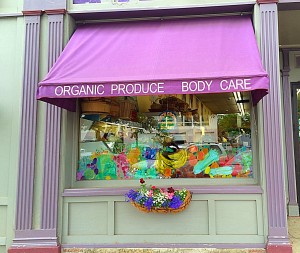
A local grocery market we stumbled upon in Brunswick, ME. There are so many amazing local stores in the area!
Williams College: The garden at Williams is funded under the college’s Zilkha Center for Environmental Initiatives. Similar to Colby, there is one person overseeing the garden and interns, and for the most part interns have a wide range of freedom. On the other hand, I thought it was interesting that their gardens were located in a very visible part on campus. The staff leading the gardens on campus explained that the more visible it is, the more likely everyone on campus will contributes to maintaining it. It is also interesting to note that the two gardens are both relatively small in size. One of the gardens is solely made up of raise beds.This was a great experience for Matt and me because Holy Cross is very limited to space; thus, Williams’ model can potentially be something Holy Cross can replicate. Additionally, we were already thinking that raise beds would be the best option for us, and being able to see how it is utilized was extremely helpful. Lastly, something that sparked some interest was the idea of growing ‘edible’ plants throughout campus— such a simple idea holds so many meanings.
Everything we experienced was very inspirational as we continue along our research. We are so appreciative that the staffs that met with us had set aside some time to show us around and answer our questions. It also made be so grateful for this opportunity this summer, the Mellon Program have allowed me to explore all these wonderful new places, as well as meeting different people with different values, characters, and visions. At the end of the day, it reminds me that I am truly not alone in this journey, rather I am part of something much bigger
